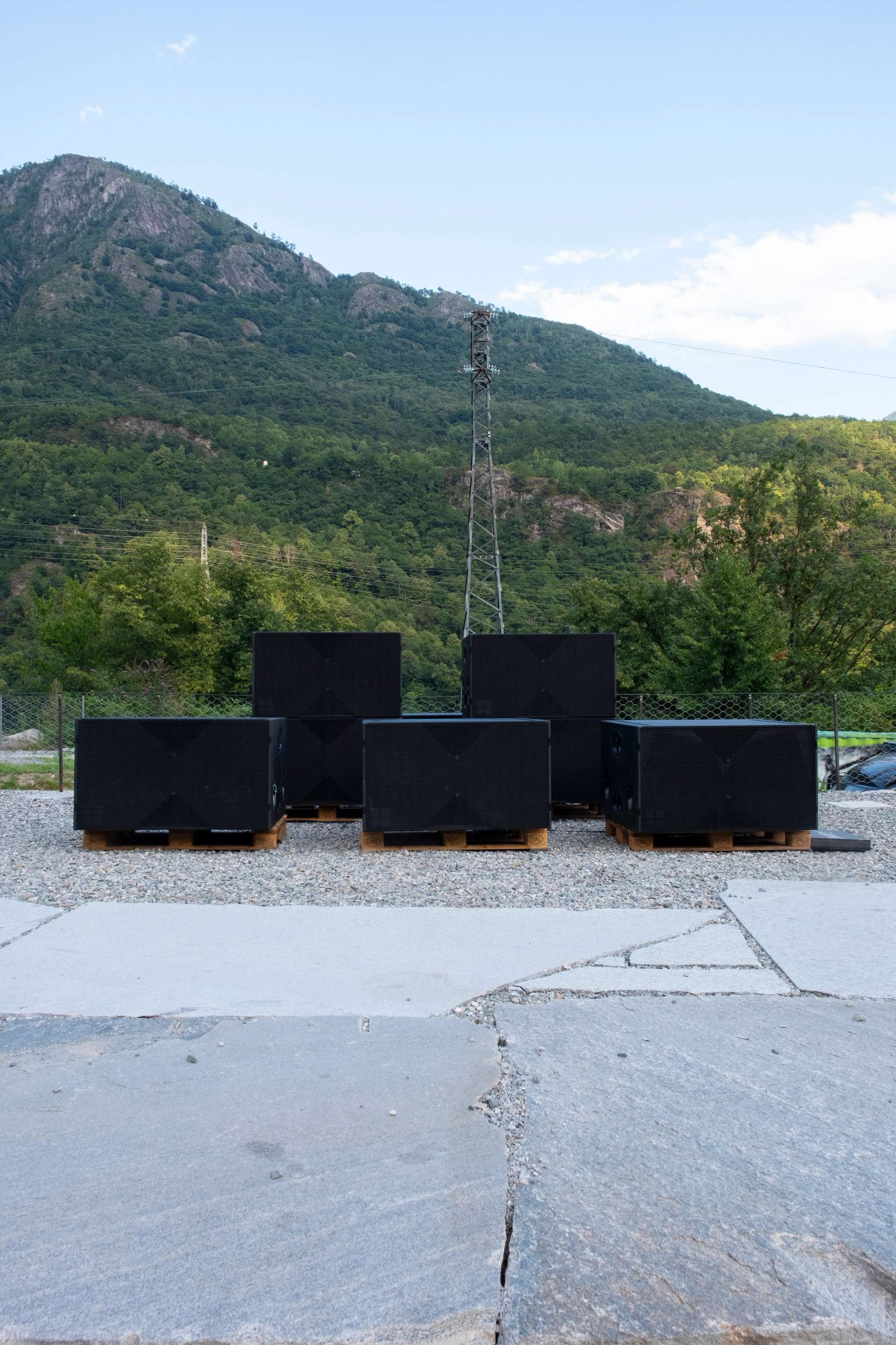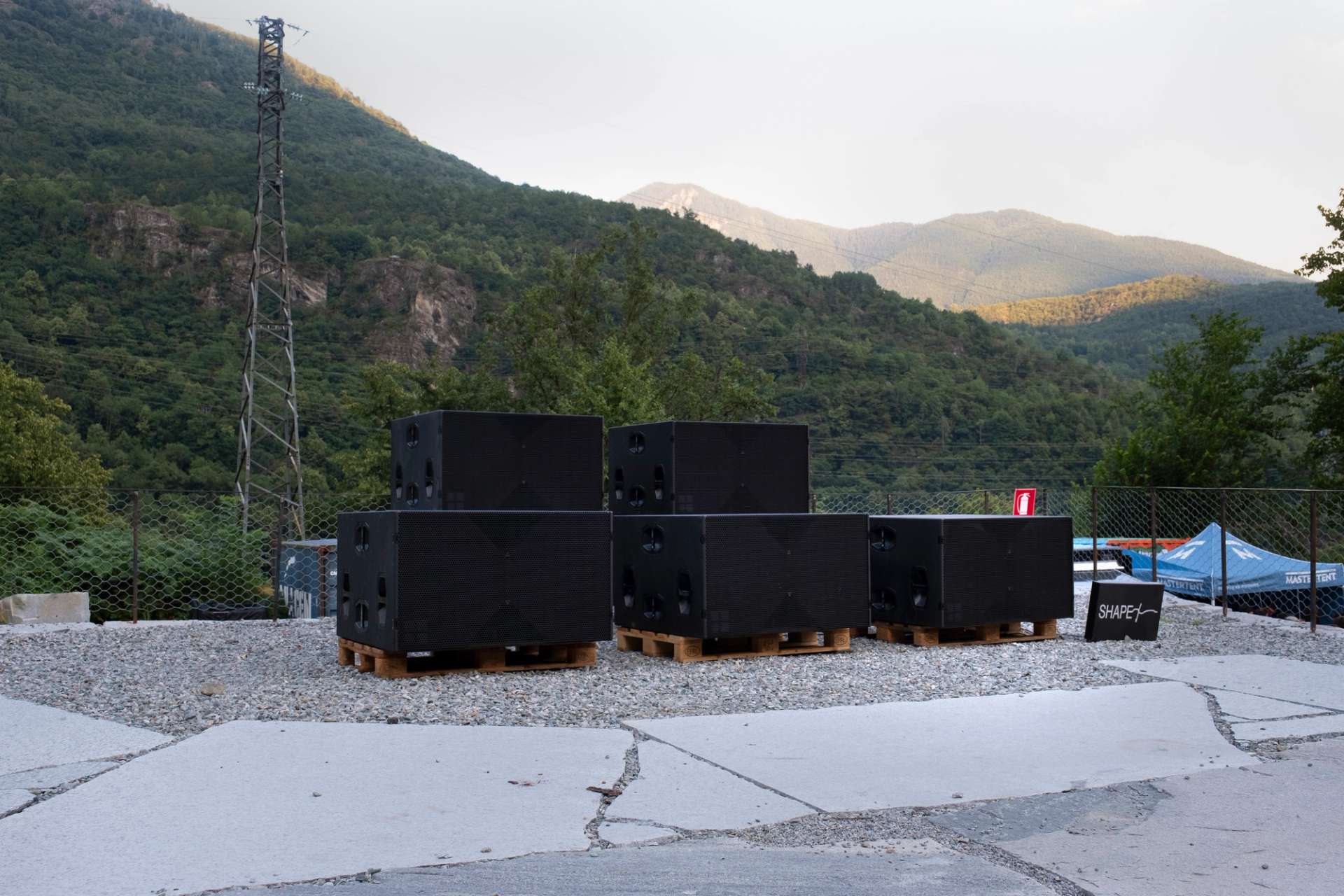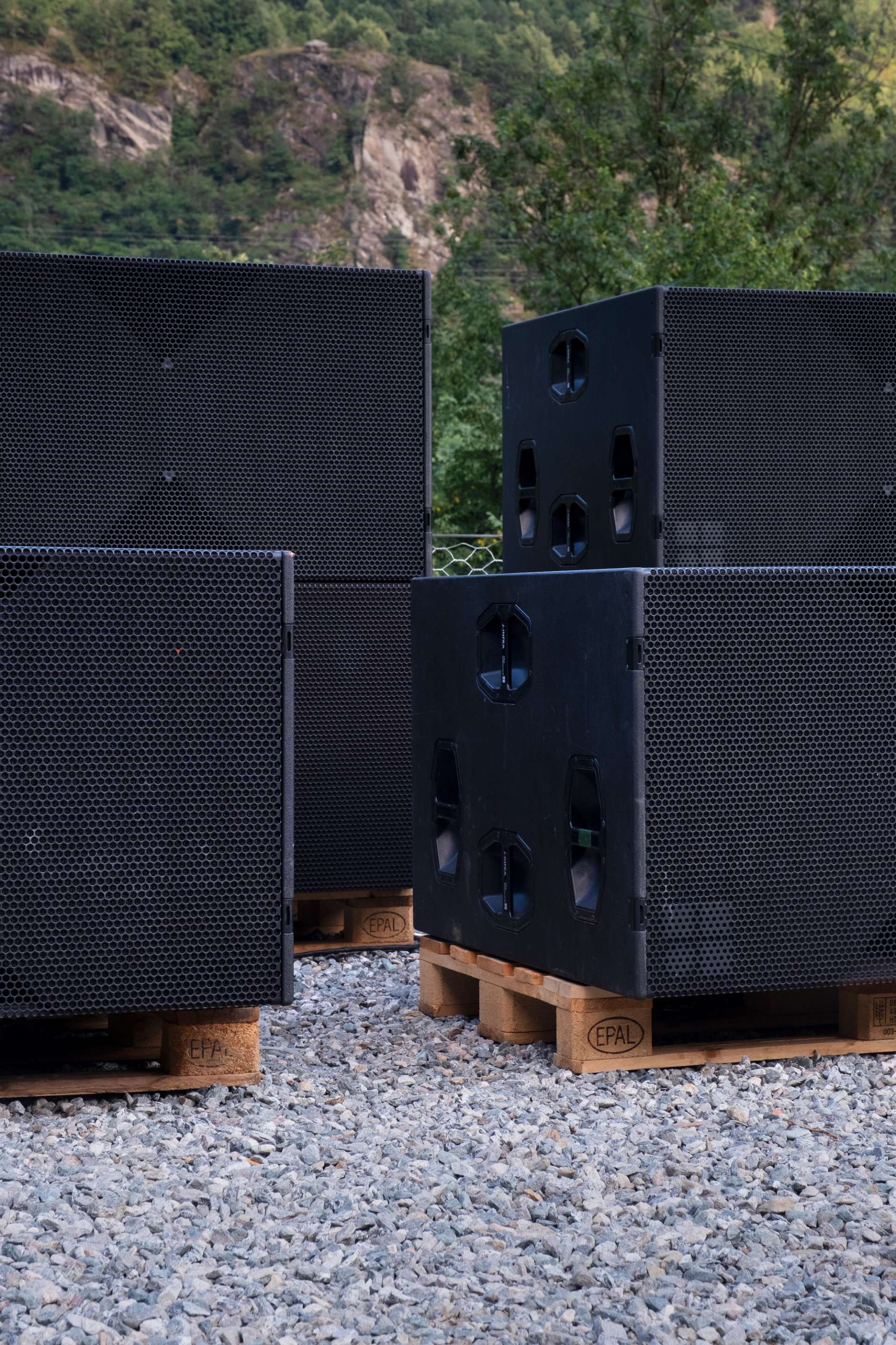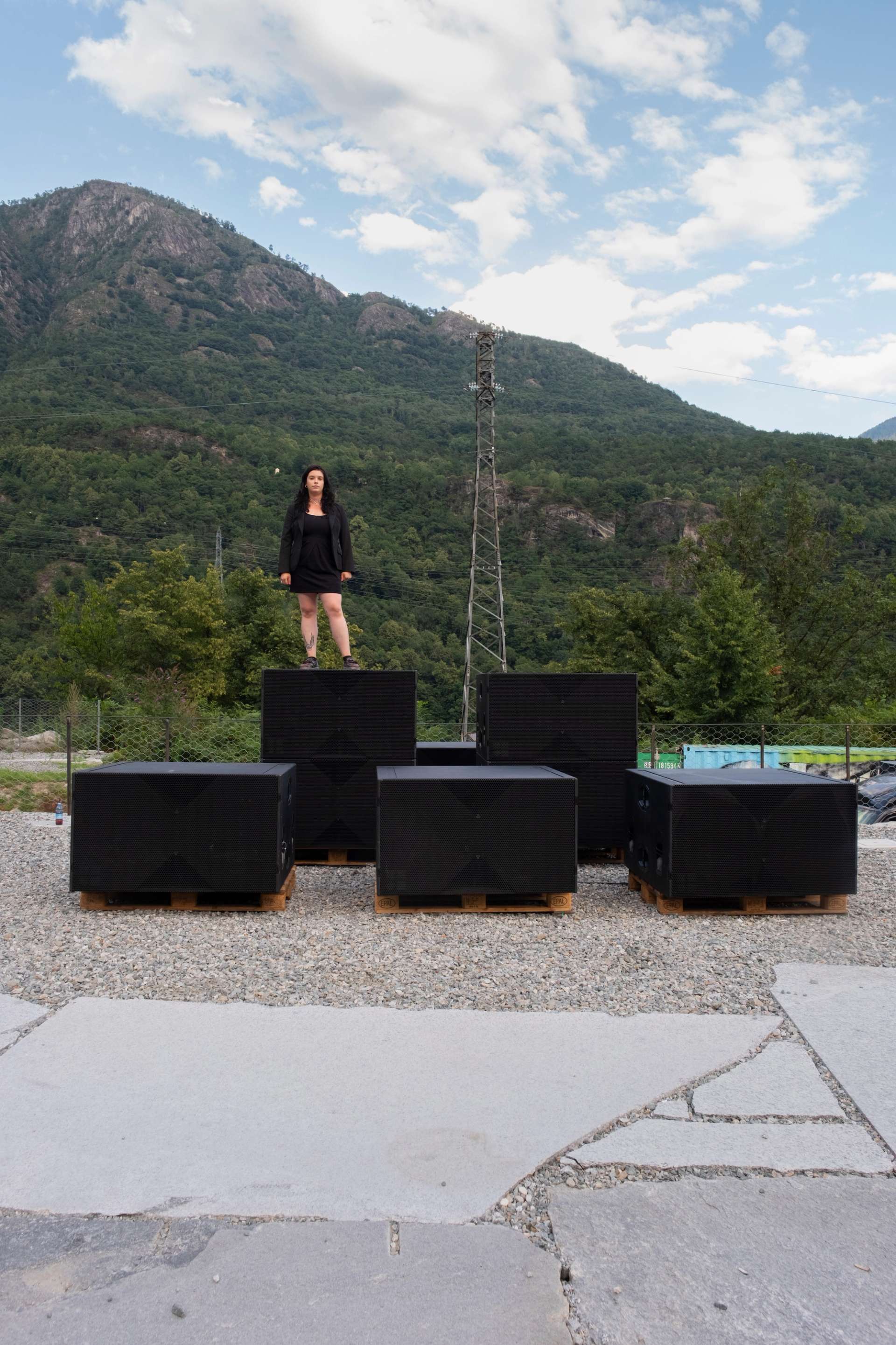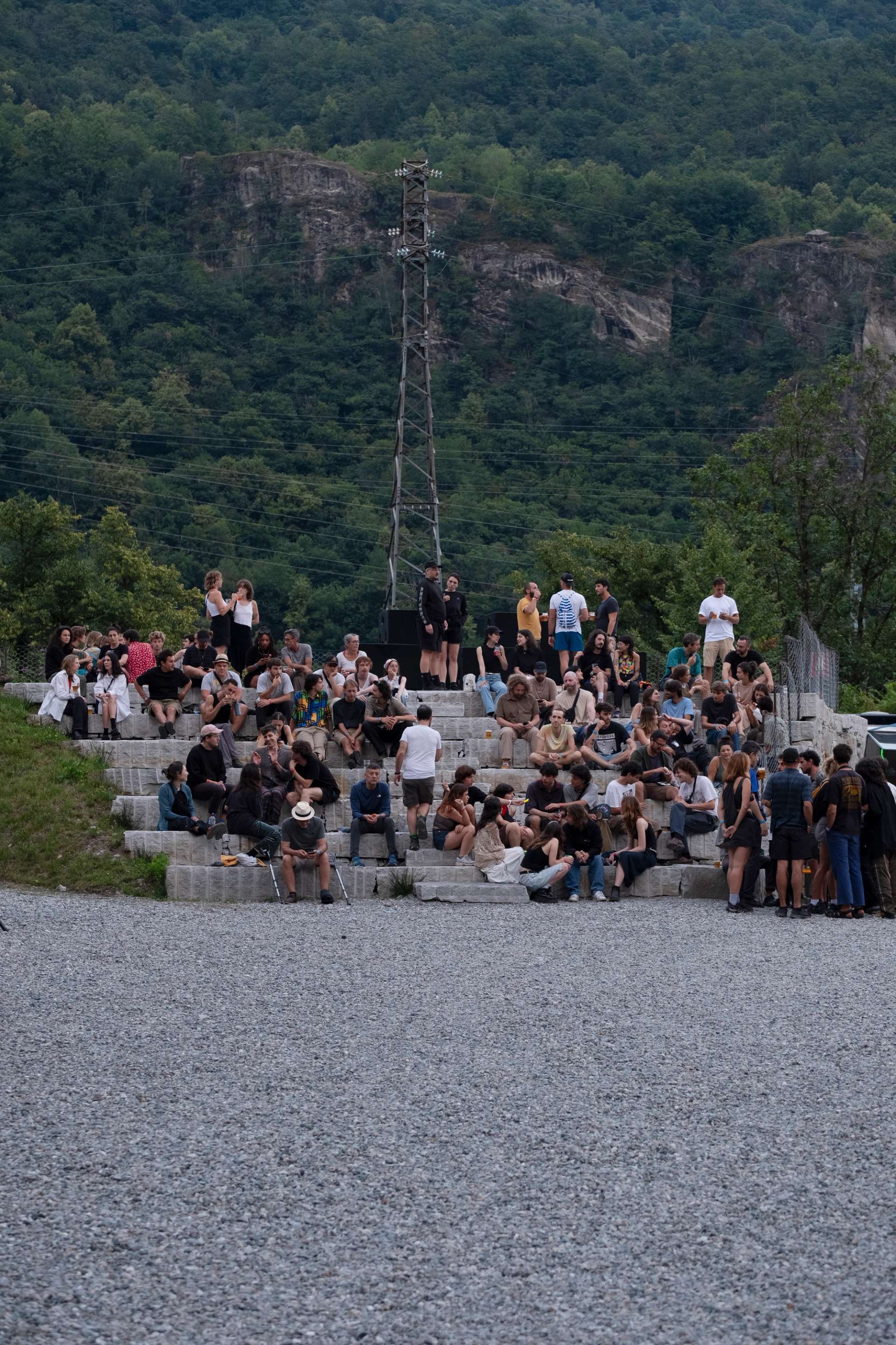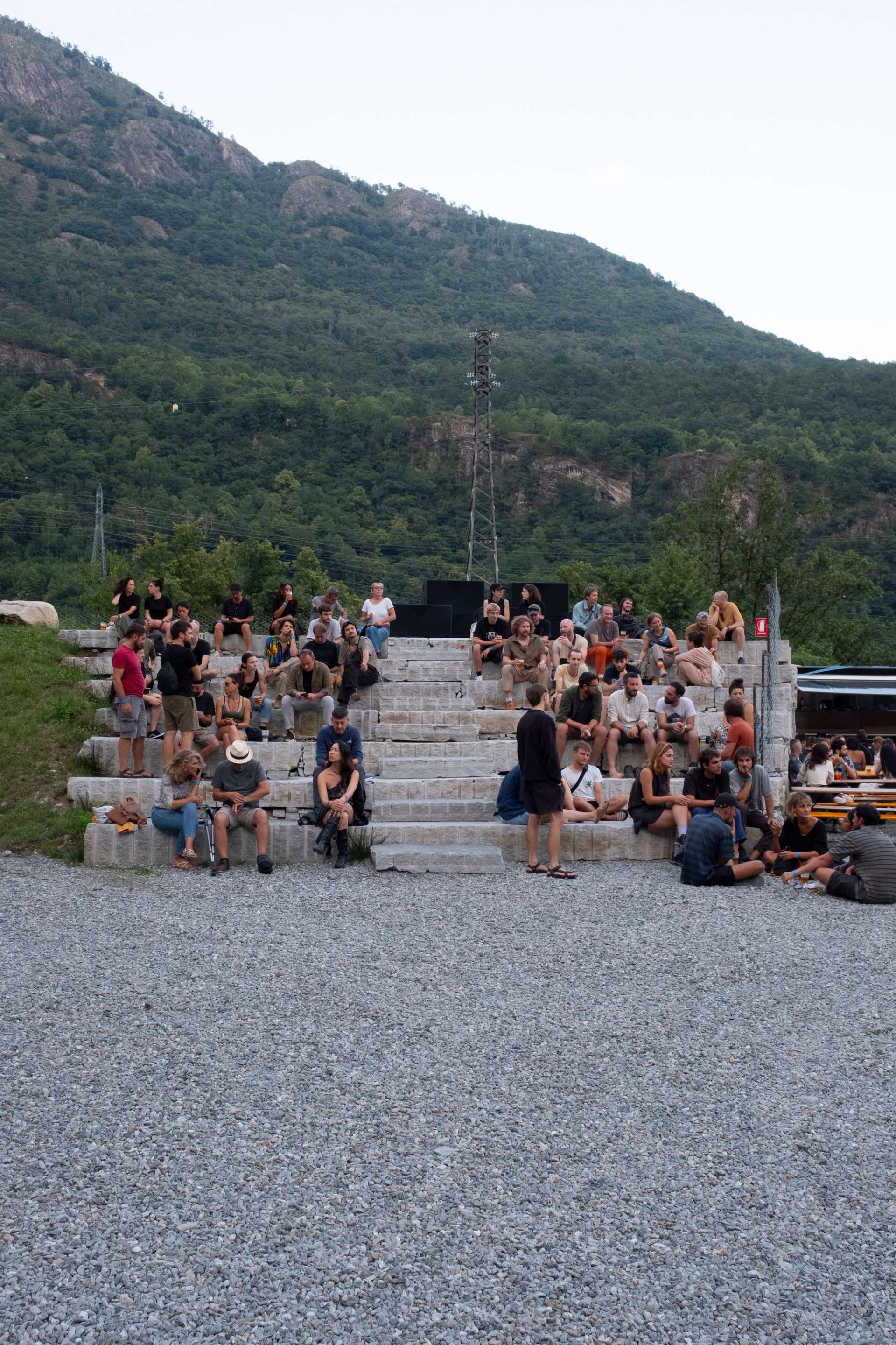For Una Boccata d'Arte, Brazilian artist Stefanie Egedy presents BODIES AND SUBWOOFERS (B.A.S.) 8.0: PERMANENZA, a site-specific sound installation composed of subwoofers and low-frequency sound waves. Pursuing the idea and practice of a vibrational experience and the therapeutic effects of low-frequency sound, such as stress and anxiety reduction, Egedy constructs a body of work called BODIES AND SUBWOOFERS (B.A.S.). By analyzing the specificities of the surrounding space, the artist arranges the subwoofers and selects the sound frequencies, taking into account their transparency, only perceived through tactile perception, as well as those that create other sounds, such as resonances, reverberations, and vibrations.
Considering the specificities of the surrounding environment, initially planned for a village in Valle d’Aosta and later transferred to Tones Teatro Natura in Oira (a hamlet of Crevoladossola) due to the limitations imposed by the village, Egedy has arranged 8 subwoofers in a specific configuration that offers a unique vibrational experience for the location. Around the subwoofers, seats crafted by an artisan from Valle d’Aosta have been installed, creating a harmonious landscape between nature and technology. Thanks to this particular arrangement of the subwoofers, Egedy manages to create "live zones" with higher or variable sound pressure and "dead zones" without any acoustic pressure. The liveliness of an area is determined by the expression of sound pressure throughout the zone, where our bodies can perceive the acoustic signal directly through our skin. Invisible to the eye but immediately perceived by the body, these long sound waves embrace the bodies and the surrounding spaces, filling the air with pressure while simultaneously taking care of our bodies. In other words, Egedy works with the invisible touch of sound, where an audio massage is perceived by our skin and listened to by our body and soul.
ㅤ
Work:
Stefanie Egedy, BODIES AND SUBWOOFERS (B.A.S.) 8.0: PERMANENZA, 2023, 8 Subwoofer J-INFRA d&b, wooden seats, variable dimensions.
ㅤ
Exhibited work: Tones Teatro Natura, Via Valle Formazza, Oira - fraz. di Crevoladossola (VB)
ㅤ
* The artistic intervention carried out for Valle d'Aosta was transferred to Tones Teatro Natura, Oira (VB) in Piedmont
Stefanie Egedy lives and works in Berlin. She investigates sound as a composer of conceptual pieces, music, and electronic music. She is focused on researching possibilities with low-frequency sound, bodies, and subwoofers. Her practice stems from installations to live performances, building a body of work called BODIES AND SUBWOOFERS (B.A.S.). Sub-bass, bass, infrasound, subwoofers, and their capacity to make themselves present in a space, are the foundations of her artistic practice. Egedy explores the interaction between human/architectural bodies and sound waves, using field recordings and analog and digital synthesis, creating a cross-over between sonorous and musical language to investigate sonic communication between beings.
Egedy co-runs the label COISAS QUE MATAM, researches the relations between light and sound with Camille Laurent, and has worked with Chris Salter on his latest spatial production; whilst a former academic investigation of the political impacts of social and technological acceleration during a bachelor’s in Public Administration and Philosophy resonates with the work. Stefanie Egedy is an artist of the SHAPE+ platform for innovative music and interdisciplinary art, co-funded by the European Union.
DA ANNI PORTO AVANTI "B.A.S.", UN PROGETTO INCENTRATO SUGLI EFFETTI TERAPEUTICI DEL SUONO A BASSA FREQUENZA E DELLE VIBRAZIONI GENERATE ATTRAVERSO COMPOSIZIONI SONORE PENSATE APPOSITAMENTE PER IL LUOGO. IN VALLE D'AOSTA LA NATURA DEL MIO LAVORO È STATA COMPROMESSA DALLE RICHIESTE IMPOSTE DAL BORGO OSPITANTE IMPEDENDOMI DI CREARE UN'INSTALLAZIONE CHE RISPECCHIASSE I MIEI STANDARD. CON IL SUPPORTO DI THREES E DI FONDAZIONE ELPIS ABBIAMO SPOSTATO L’INTERVENTO A TONES TEATRO NATURA DOVE LE PERSONE VIVONO L’ESPERIENZA COSÌ COME INIZIALMENTE CONCEPITA
The site-specific installation BODIES AND SUBWOOFERS (B.A.S.) 8.0: PERMANENZA, created by Stefanie Egedy for Valle d’Aosta, has been transferred to Tones Teatro Natura in Oira, a hamlet of Crevoladossola, Piedmont. Tones Teatro Natura is a project by Fondazione Tones on the Stones which, through a process of environmental improvement, initiated the transformation of a disused granite quarry into a theatre immersed in nature. Over the summer, Egedy’s installation was presented during the Nextones and Campo Base festivals.
Nextones is an international festival of music, audiovisual arts and research. The 2023 edition took place from 20 to 23 July with a programme of site-specific performances and audiovisual shows by some of the most interesting artists and researchers on the contemporary scene.
Campo Base explores the relationship between man and nature and themes related to mountain and outdoor culture. Running from 1 to 3 September, the festival presents practices of reconnection with the natural environment to underline its pivotal role in the human experience.
Designed to interact and integrate with the surrounding area, Egedy’s installation offers the public a vibrational and therapeutic audio experience in the remarkable natural setting of Tones Teatro Natura.
